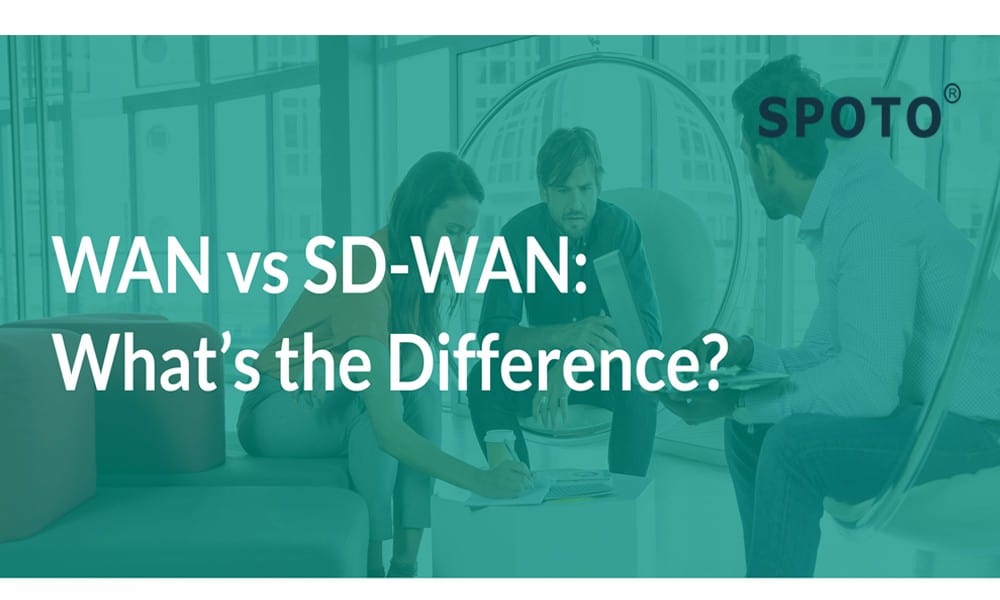What is the difference between WAN and SD-WAN?
 Would you be facing issues with your current network infrastructure? Do you have a cloud migration strategy? If you haven't considered the benefits of a software-defined WAN solution, SD-WAN now might be regarded as the time. Because it would be delivering through the cloud, SD-WAN would be reducing capital expenditures and simplifying network operations. Before we look into both of them, check out the SPOTO Club's IT exam training courses.
Would you be facing issues with your current network infrastructure? Do you have a cloud migration strategy? If you haven't considered the benefits of a software-defined WAN solution, SD-WAN now might be regarded as the time. Because it would be delivering through the cloud, SD-WAN would be reducing capital expenditures and simplifying network operations. Before we look into both of them, check out the SPOTO Club's IT exam training courses.
 Traditional WAN solutions would often be incorporating a hybrid of public as well as leased lines. MPLS, which is considered a traditional WAN connectivity method, is utilized to assign preference, which would be based on SLA guarantees. You could be determining timeliness for delivery of traffic. This would be become very important, particularly for voice as well as video-based applications. Additionally, traditional WAN would be leveraging internet-based backup as a secondary transport should the primary path be unavailable. While traditional WAN could work well for some businesses, there would be disadvantages to remaining traditional WAN architecture.
Traditional WAN solutions would often be incorporating a hybrid of public as well as leased lines. MPLS, which is considered a traditional WAN connectivity method, is utilized to assign preference, which would be based on SLA guarantees. You could be determining timeliness for delivery of traffic. This would be become very important, particularly for voice as well as video-based applications. Additionally, traditional WAN would be leveraging internet-based backup as a secondary transport should the primary path be unavailable. While traditional WAN could work well for some businesses, there would be disadvantages to remaining traditional WAN architecture.
What are the disadvantages of traditional WAN architecture?
- Failover, switching to a standby server or system when your primary application would be going down, would be utterly dependent upon the state of the link (up/down). This means that you are required to depend on routing protocol re-convergence. This could cause several seconds worth of outage, resulting in dropped or phone calls or lost video.
- The configuration would be distributed, meaning that configuration is housed locally on each router, but would typically template.
- New policies are required to be managed on a per-device basis and need your administrator to touch each device as policies change.
- A significant time is required for new site turn-up. This would be including time for equipment provisioning, circuit delivery, as well as change management. New sites could take months to turn up due to the complexities of change management and project coordination.
Why SD-WAN?
SD-WAN is considered to be a shift in the way a Wide Area Network would be managed and deployed. As its name implies, SD-WAN is deemed to be a software-driven technology with application awareness that would be managed from a centralized point in the network. SD-WAN solutions would be deployed as an overlaying technology to an existing topology, which would allow for ease of integration and adoption over time.The advantages of SD-WAN include:
- Lower circuit costs:
- Adoption of cloud-based services:
- SD-WAN would be providing simplified QoS as well as prioritization of critical applications across the WAN. Rather than waiting for an up/down event, SD-WAN would be providing real-time traffic monitoring for diverting business-critical traffic across the brownout events.
- Ability to support high-bandwidth intensive applications concurrently, offloading them on local internet wherever applicable. These bandwidth requirements could be a challenge for traditional WAN.

What are the advantages of SDN?
Cisco NFV and SDN: What’s the Difference?
Are SDNs withdrawing the Value of the Cisco CCIE or CCNP?
What is the change in Cisco 2020?
What Are the Values and Reasons to Obtain Cisco Certification?
Recommended Reading: